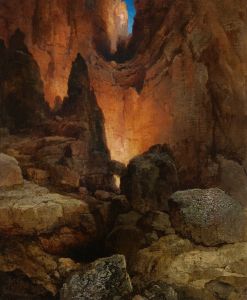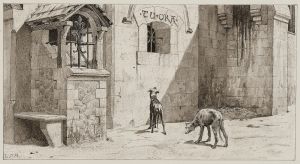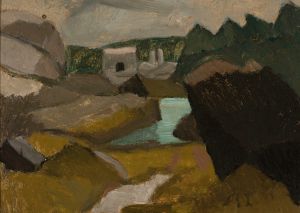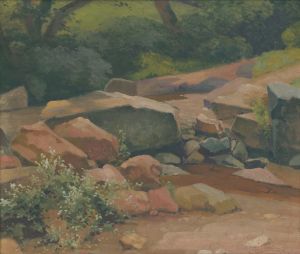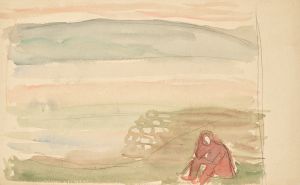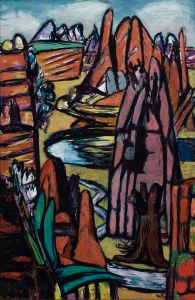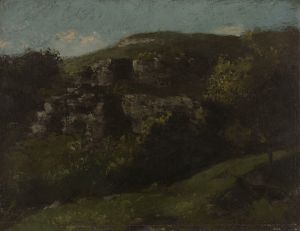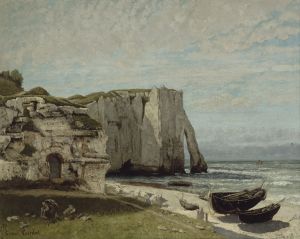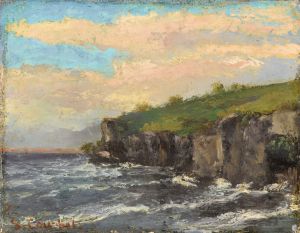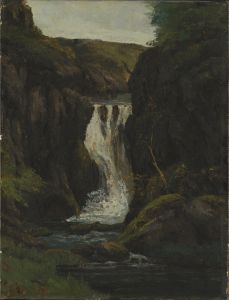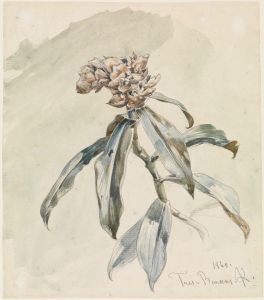
Rocks at Mouthier
A hand-painted replica of Gustave Courbet’s masterpiece Rocks at Mouthier, meticulously crafted by professional artists to capture the true essence of the original. Each piece is created with museum-quality canvas and rare mineral pigments, carefully painted by experienced artists with delicate brushstrokes and rich, layered colors to perfectly recreate the texture of the original artwork. Unlike machine-printed reproductions, this hand-painted version brings the painting to life, infused with the artist’s emotions and skill in every stroke. Whether for personal collection or home decoration, it instantly elevates the artistic atmosphere of any space.
"Rocks at Mouthier" is a painting by the renowned French artist Gustave Courbet, who was a leading figure in the Realist movement of the 19th century. Courbet is celebrated for his commitment to painting realistic scenes of everyday life and nature, often challenging the conventions of the art world of his time. This particular work, "Rocks at Mouthier," exemplifies his dedication to capturing the natural beauty and rugged landscapes of his native region.
Gustave Courbet was born in 1819 in Ornans, a small town in the Franche-Comté region of eastern France. This area, known for its picturesque landscapes and dramatic geological formations, provided a rich source of inspiration for Courbet throughout his career. The painting "Rocks at Mouthier" is believed to depict the rocky terrain near Mouthier-Haute-Pierre, a village located in the Doubs department, not far from Courbet's hometown.
Courbet's approach to landscape painting was revolutionary for its time. He rejected the idealized and romanticized depictions of nature that were prevalent in the art of the early 19th century. Instead, he focused on portraying the natural world with honesty and precision, emphasizing its raw and unrefined beauty. In "Rocks at Mouthier," Courbet's attention to detail is evident in the careful rendering of the rock formations, capturing their texture and solidity with remarkable skill.
The painting is characterized by its earthy color palette, dominated by shades of brown, gray, and green, which reflect the natural hues of the landscape. Courbet's use of light and shadow adds depth and dimension to the scene, creating a sense of realism that draws the viewer into the rugged terrain. The composition is balanced and harmonious, with the rocks occupying the foreground and the sky providing a contrasting backdrop.
Courbet's technique in "Rocks at Mouthier" demonstrates his mastery of the medium. He employed a variety of brushstrokes to convey the different textures of the rocks and vegetation, from the smooth surfaces of the stone to the roughness of the foliage. This attention to detail and texture is a hallmark of Courbet's work and contributes to the painting's lifelike quality.
Throughout his career, Courbet was known for his independent spirit and refusal to conform to the artistic norms of his time. He often depicted subjects that were considered unconventional or controversial, challenging the established standards of the art world. "Rocks at Mouthier" is a testament to his belief in the importance of painting from direct observation and his dedication to representing the world as he saw it.
Today, Gustave Courbet is regarded as one of the pioneers of modern art, and his influence can be seen in the work of later artists who embraced realism and naturalism. "Rocks at Mouthier" remains an important example of his contribution to the development of landscape painting and his enduring legacy as a master of realism. The painting continues to be admired for its technical excellence and its ability to convey the timeless beauty of the natural world.





